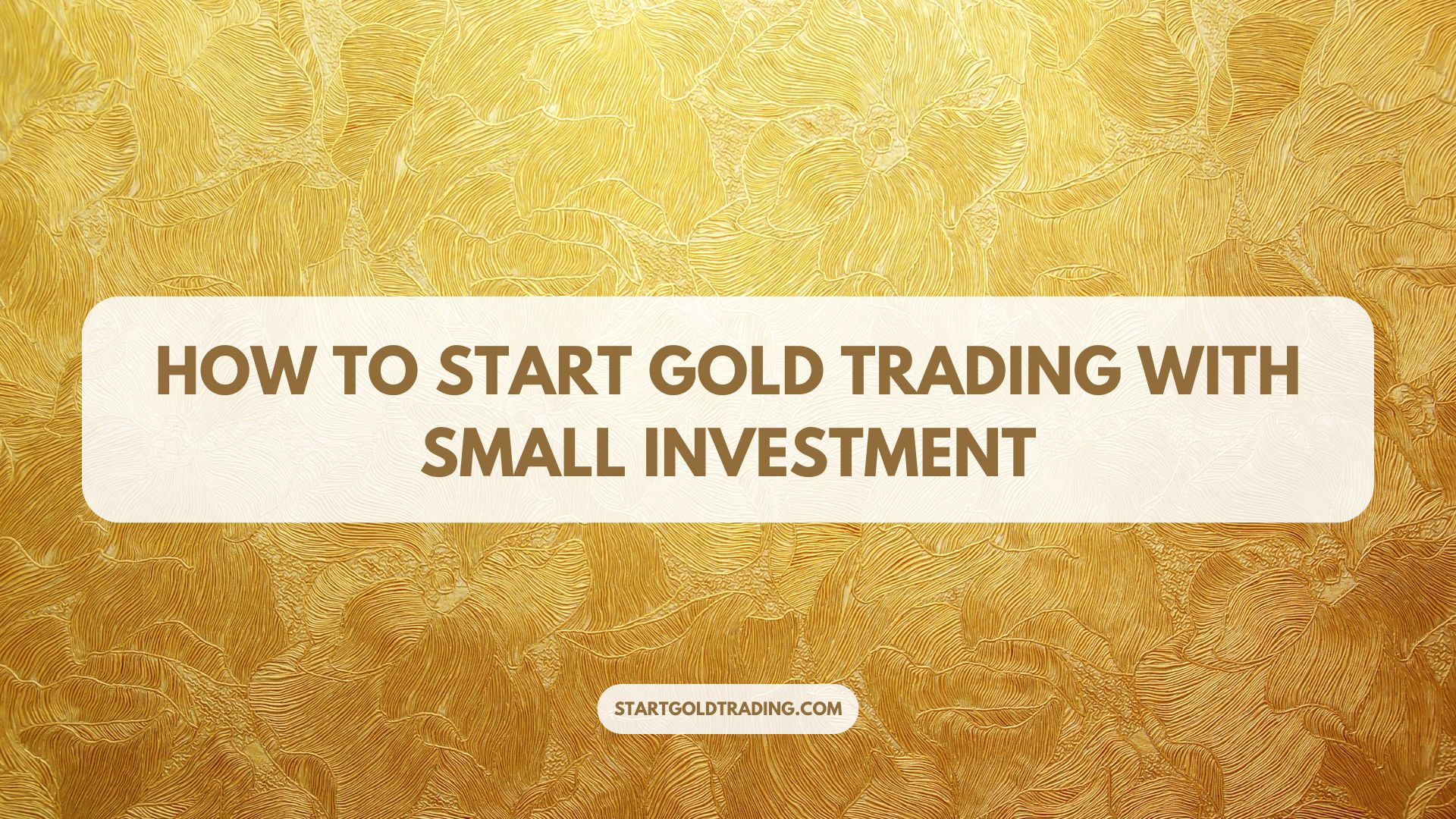Gold trading is often perceived as requiring large capital, but with the right strategies, you can start trading gold with a small investment. By using mini and micro lots, ETFs, and cost-effective trading strategies, you can participate in the gold market without needing a huge budget.
This guide will walk you through how to trade gold with minimal capital while managing risk and maximizing returns.
1. Using Mini and Micro Lots: Managing Risk with Smaller Trades
When trading gold, lot size plays a crucial role in capital allocation and risk management. Most brokers offer three types of lot sizes:
🔹 Standard Lot (100 oz of gold)
✔ 1 lot = 100 troy ounces of gold
✔ Requires high capital investment
✔ More suited for experienced traders with larger accounts
🔹 Mini Lot (10 oz of gold)
✔ 1 mini lot = 10 troy ounces of gold
✔ Requires less capital than standard lots
✔ Ideal for small traders looking for moderate risk exposure
🔹 Micro Lot (1 oz of gold)
✔ 1 micro lot = 1 troy ounce of gold
✔ Best for beginners and traders with a small account
✔ Lowers risk, making it a cost-effective way to trade gold
📍 Example:
If gold is priced at $2,000 per ounce, a micro lot trade (1 oz) would require about $2,000, whereas a mini lot (10 oz) would require $20,000. However, with leverage, traders can control these positions with a much smaller initial deposit.
📌 Pro Tip: Choose brokers that offer micro lot trading to start small and gradually scale up as you gain experience.
2. Utilizing ETFs and Mutual Funds: Low-Cost Gold Investments
If you want exposure to gold but prefer not to trade gold CFDs or futures, investing in gold ETFs (Exchange-Traded Funds) and mutual funds is a great option.
🔹 What Are Gold ETFs?
Gold ETFs allow investors to buy shares that track gold prices without owning physical gold.
✅ Lower investment requirement than buying physical gold
✅ No storage or insurance costs
✅ Easy to trade like stocks on exchanges
📍 Example: SPDR Gold Shares (GLD) is a popular gold ETF that mimics the price of gold and can be traded like a stock.
🔹 Gold Mutual Funds
Gold mutual funds invest in:
- Gold mining stocks
- Physical gold-backed assets
- Diversified commodity portfolios
✅ Ideal for long-term investors with a small budget
✅ Offers diversification beyond just gold price movements
📌 Pro Tip: If you’re a beginner, gold ETFs are the best option because they provide exposure to gold without requiring large capital or active trading skills.
3. Cost-Effective Trading Strategies for Small Investors
With a small investment, it’s crucial to maximize returns while minimizing risks. Here are the best strategies:
🔹 Leverage and Margin Trading
Many brokers offer leverage, allowing you to control a larger position with less capital.
📍 Example:
With 10:1 leverage, you can control $10,000 worth of gold with just a $1,000 deposit.
✅ Pros: Magnifies profit potential.
❌ Cons: Also increases risk, so use leverage wisely.
📌 Risk Management Tip: Limit leverage to 5:1 or 10:1 to reduce the risk of margin calls.
🔹 Dollar-Cost Averaging (DCA) Strategy
Instead of making a large one-time investment, DCA involves investing small amounts in gold regularly.
✅ Reduces the impact of market volatility
✅ Helps build a gold position gradually
✅ Ideal for long-term investors with a small budget
📍 Example: Invest $100 per month in a gold ETF instead of making a one-time $1,000 trade.
🔹 Trading Gold During High-Volume Sessions
Gold is most liquid during the London and New York trading sessions.
📌 Best Time to Trade Gold:
✅ London Session (8 AM – 4 PM GMT) – High liquidity and volatility.
✅ New York Session (1 PM – 9 PM GMT) – Strong price movements, ideal for day traders.
📌 Pro Tip: Avoid trading during low-volume hours when spreads widen, making trades more expensive.
Final Thoughts: How to Start Gold Trading with Minimal Capital
You don’t need a large investment to start trading gold. By utilizing micro lots, ETFs, and cost-effective strategies, you can enter the gold market with low risk and high flexibility.
✅ Key Takeaways:
✔ Trade micro and mini lots to manage risk effectively.
✔ Consider gold ETFs and mutual funds for small, long-term investments.
✔ Use leverage cautiously and apply smart trading strategies.
✔ Trade during high-volume sessions to maximize opportunities.
With the right approach, you can start gold trading today with as little as $100 and build your portfolio over time!
📌 Ready to start? Open a demo account and test your gold trading strategy today! 🚀

